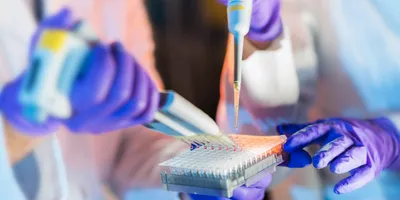Laboratory gloves are essential personal protective equipment (PPE) in every lab environment. However, selecting the right pair of gloves is more complex than grabbing what's available on the shelf. A glove that works well for one task or hazard may be completely inadequate for another.
Proper glove selection must be driven by the specific type of hazard—chemical, biological, thermal, or mechanical—as well as the nature of the work being performed.
Match laboratory gloves to the hazard
Not all laboratory gloves are created equal. To ensure effective protection, glove choice should align with the type of hazard present:
- Chemical hazards: Different glove materials offer different levels of chemical resistance. Nitrile gloves often provide good protection against a wide range of solvents, but they may not be appropriate for strong acids or oxidizers. Butyl and neoprene gloves may offer better chemical resistance in some scenarios. Always consult chemical compatibility charts before selecting gloves for chemical handling.
- Biological hazards: When working with infectious agents, laboratory gloves must create a reliable barrier against microorganisms. Nitrile and latex gloves are widely used for biosafety applications because they offer excellent fit and tactile sensitivity. Though nitrile and latex are common choices, check with your staff to see if anyone is allergic to latex. If so, you will need alternative options for these individuals.
- Thermal hazards: Standard gloves do not protect against extreme temperatures. For cryogenic work, use cryo-rated laboratory gloves that insulate against extremely cold materials like liquid nitrogen. Heat-resistant gloves made from insulated or aluminized materials are required for handling hot equipment or glassware.
- Mechanical hazards: Working with sharps, glassware, or performing repetitive manual tasks may require thicker gloves with enhanced cut resistance or textured surfaces for better grip. These gloves protect hands from punctures, abrasions, and physical strain.
Evaluate glove materials and performance
While hazard type is a critical factor, lab managers must also consider task-specific performance. Laboratory gloves need to balance protection, comfort, and functionality.
- Glove thickness: Thicker gloves offer greater barrier protection and higher resistance to punctures or chemical breakthrough. However, they may limit dexterity and tactile feedback. For precision tasks, thinner gloves may be more appropriate if they still provide adequate protection.
- Fit and dexterity: Laboratory gloves should fit snugly without restricting movement. Poorly fitting gloves can hinder task performance or lead to accidents. Sizing options must be available to ensure each lab worker has access to gloves that fit properly. Work with your staff directly to ensure there are sizes that work properly for everyone.
- Breakthrough time: This is the time it takes for a chemical to permeate the glove material. Lab managers should choose laboratory gloves with a breakthrough time that comfortably exceeds the duration of exposure for a given task. In higher-risk settings, double-gloving may be necessary to minimize exposure risk.
- Permeation and degradation: In addition to breakthrough time, consider whether the glove material will weaken, swell, or degrade upon exposure to specific chemicals. This ensures long-term protection during use.
Promote glove awareness and demand proper use
Laboratory gloves are an essential form of personal protective equipment (PPE)—the last barrier of defense against lab hazards. Improper glove selection can result in chemical exposure, biological contamination, burns, or physical injury. Lab workers must understand that gloves offer effective protection only when matched correctly to the specific hazard and task. Safety training should explicitly cover glove selection for each lab activity, emphasizing the risks associated with improper glove use.
To reinforce training, lab managers should provide chemical compatibility charts and clear signage near glove storage areas. Conveniently place appropriate gloves directly within task-specific workspaces, ensuring proper PPE is immediately available.
Periodic glove-use audits help verify PPE practices and identify areas for improvement. Offering a comprehensive selection of glove types and sizes tailored to the lab’s diverse tasks further emphasizes the critical importance of selecting the right glove every time.
Laboratory gloves are not one-size-fits-all
When lab managers approach glove selection strategically—prioritizing hazard protection, fit, and functionality—they improve both safety and lab performance. Laboratory gloves should not be selected out of habit or convenience. By aligning glove type with the hazard and task, labs can reduce risk, increase compliance, and create a more resilient safety culture.
But the lab manager’s responsibility doesn't end with simply providing enough gloves in appropriate types and sizes. Managers must actively train staff to select and consistently use the right gloves for each task. Doing so reduces hand injuries, enhances worker safety, boosts productivity, and contributes to retaining skilled staff by demonstrating the lab’s commitment to their well-being.












